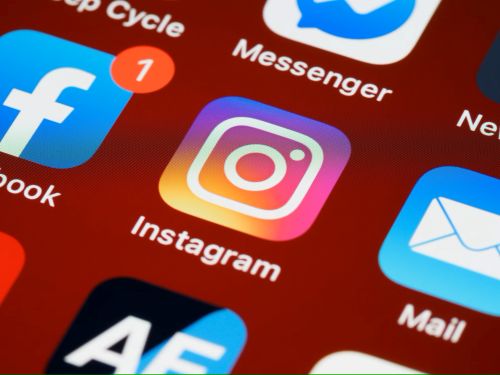The Digital Front Line: How Social Media Fights Tyranny—and How We Must Use It Now
In the battle against autocracy, social media has become one of the most potent weapons in the hands of the people. Unlike traditional media, which is often constrained by editorial filters, profit motives, or political pressure, social media enables direct, decentralized communication. It allows ordinary people to document injustice, shape narratives, and organize resistance in real time. In the face of rising authoritarian threats, including Donald Trump’s ongoing efforts to undermine democratic norms—social media offers a powerful platform for exposure, education, mobilization, and collective action.
The Unique Power of Social Media
Social media bypasses traditional gatekeepers. It gives marginalized communities a microphone and empowers individuals to frame their own stories. It’s faster than any newsroom and often more trusted than official press briefings. From hashtags that spark global conversations to videos that capture moments mainstream cameras miss, social media is not just a tool, it’s a lifeline for truth and accountability.
If you think back to the Arab Spring, social media helped dismantle information firewalls, galvanizing mass uprisings against entrenched regimes. In the United States, #BlackLivesMatter emerged not from a press release, but from a tweet. It was an unfiltered outcry that traveled across communities and continents, exposing structural racism and police violence. The same holds true for #MeToo, where survivors used social media to speak truth to power and dismantle cultures of silence.
From Tehran to Minneapolis, social media has made visible what autocrats prefer hidden.
How Social Media Undermines Authoritarianism
To understand social media’s revolutionary power, you should look at what it disrupts:
- It exposes state violence: Cell phone videos, livestreams and viral images hold police and paramilitary forces accountable, often before governments can spin the narrative.
- It counters disinformation: Independent voices, digital watchdogs and real-time fact-checkers on social media can blunt propaganda and correct distortions before they metastasize.
- It coordinates resistance: Protest logistics, mutual aid efforts and rapid-response actions can be organized through encrypted messaging and open platforms.
- It unites global solidarity: Hashtags connect struggles across borders, amplifying local resistance with international support and scrutiny.
- It reshapes political culture: Memes, satire and subversive art on social media strip authoritarian figures of their aura and expose their contradictions in ways that traditional critiques can’t match.
Social Media vs. Trump’s Autocratic Blueprint
Donald Trump’s autocratic ambitions are no secret. Through disinformation, voter suppression, judicial manipulation, and attacks on the press, his strategy mirrors classic authoritarian playbooks. But social media can, and must, be mobilized to resist him.
- Expose authoritarian tactics: Use social media to document and explain every attempt to subvert democratic norms, whether it’s threats against the judiciary, attacks on the free press, or the spread of election lies.
- Elevate watchdog voices: Journalists, activists, and whistleblowers need amplification. Social media can magnify their impact and protect them by placing their revelations in full public view.
- Educate through shareable content: Break down complex legal or political moves, like the use of the Insurrection Act or threats against civil service, into digestible posts, threads, infographics, and videos.
- Build coalitions through digital networks: Social media connects organizers, educators, artists, and communities in shared purpose. It’s a staging ground for united, coordinated resistance.
- Reclaim patriotic language and imagery: Autocrats often use nationalism as a shield. Through storytelling and symbolism, social media can reframe democracy, equity, and resistance as expressions of true American values.
The Responsibility to Engage
Social media is not a panacea. It can also be a vector for hate, surveillance, and division. But that only strengthens the case for conscious, strategic use. We must not surrender the digital arena to misinformation and manipulation.
History will not remember how many likes we got. But it will remember whether we used this powerful platform to speak out, organize, and defend the values we claim to cherish.
History is watching—not just what happens, but who speaks up. Use your voice, use your platform, use your power.
Helpful Resources for Building a Social Media Network
There are excellent resources tailored for beginners, and they range from step-by-step guides to platforms that simplify the process entirely.
Here are a few standout options:
Beginner-Friendly Guides
GreenGeeks Tutorial: Offers a practical walkthrough on how to create a social media website using WordPress. It covers hosting, design, and how to attract users. It’s ideal if you’re starting from scratch.
Cleveroad’s Full Guide: Breaks down the process of building a social media platform from the ground up, including types of networks, development costs, and design tips.
Mighty Networks Guide: Focuses on building purpose-driven communities. Perfect if your goal is to create a space for shared values or activism without needing to code.
No-Code Platforms for Community Building
Mighty Networks: Lets you create a branded community space with events, posts, and member profiles. No tech skills required.
Discord or Slack: While not traditional social media, these platforms are excellent for real-time community building and organizing.
Learning Community and Support
The Mighty Community: A free space where new and experienced community builders share tips and feedback.
